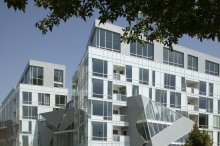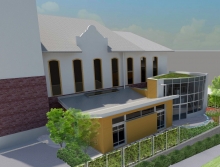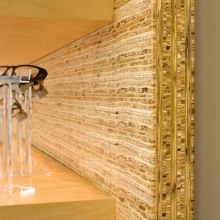The Denver Art Museum may well be the most prominent expression of Denver’s cultural heart. Daniel Libeskind’s 146,000 sq. ft. extension to the museum, The Frederic C. Hamilton Building, was a joint venture with the Davis Partnership and houses Modern, Contemporary, Oceanic, and African Art collections. The original museum, which opened in 1971, was Italian architect Gio Ponti’s first American commission and boasted an exterior of Italian tile and the innovation of stacking its galleries vertically, which sought to combat the “museum fatigue” that resulted from traversing the long horizontal layout typical of museums at the time.











